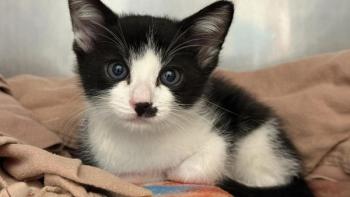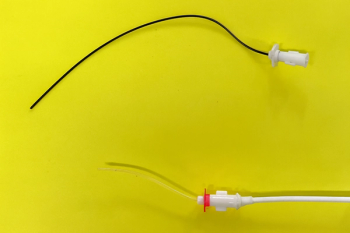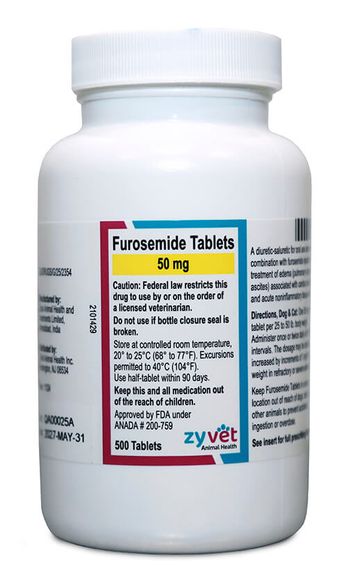
Journal Scan: Uremic gastropathy in cats with kidney disease: does it exist?
A study looks at whether cats with chronic kidney disease are more likely to develop gastric pathology as a result of uremia.
Why they did it
Cats with chronic kidney disease (CKD) often develop gastrointestinal (GI) signs that are attributed to uremic gastropathy and are subsequently treated for this condition. The authors of this study evaluated cats with CKD to determine the nature and prevalence of uremic gastropathy in this population.
What they did
The authors prospectively evaluated postmortem samples from 37 cats with CKD that were euthanized between 2009 and 2012. Twelve nonazotemic control cats euthanized at the local shelter were also included in the evaluation. No cats were euthanized for the purpose of the study. CKD cats had a serum creatinine concentration > 1.6mg/dl, urine specific gravity (USG) < 1.035, and histologic evidence of CKD based on renal histopathology. Control cats had a serum creatinine concentration < 1.6 mg/dl, USG > 1.035, and no evidence of CKD based on renal histopathology. Patients with primary GI disease, those treated with corticosteroids or nonsteroidal anti-inflammatory drugs, or those with post-renal causes of azotemia, were excluded from the evaluation. History of GI signs such as vomiting and inappetence were obtained from the medical record in 31 out of 37 cats with CKD along with calcium and phosphorous concentrations measured within two weeks of euthanasia. To investigate the relationship between elevated gastrin concentrations among cats with CKD and the development of gastric lesions, serum gastrin concentrations were also measured in all cats.
All stomach and kidney samples were evaluated and scored by two pathologists who were blinded to the clinical findings (and to the gastric findings in the case of renal evaluation).
What they found
The mean age of the cats with CKD was 13.8 years (range, 5-21). The calcium phosphorous product was higher among cats with CKD overall but was not significantly different among severely azotemic cats (serum creatinine concentration > 5 mg/dl) that were receiving phosphate binders compared with those that were not. Cats with gastric mineralization were noted to have higher calcium phosphorous products than those without evidence of mineralization, but the difference was not found to be significant. Serum gastrin concentrations among cats with CKD were significantly higher than those in the control cats (P = 0.003).
Inappetence and vomiting were noted among 84% (26/31) and 45% (14/31) of cats with CKD, respectively. While none of the cats with evidence of gastric mineralization were noted to have had a good appetite, there was no statistically significant relationship between the presence of vomiting and inappetence and gastric mineralization or fibrosis. There also was no statistically significant relationship between GI signs and gastrin concentrations.
No gross or histologic evidence of ulceration, edema, or hemorrhage was noted in the stomach of any of the CKD or control cats, but gastric fibrosis and mineralization were seen more often among the cats with CKD. The presence of fibrosis and mineralization also appeared to be independent of gastrin concentrations.
Use of phosphate binders did not appear to have an effect on the development of mineralization, but duration of therapy and hyperphosphatemia were not noted in this study. Gastrin concentrations were similar among cats that were not receiving antacid therapy compared with those that were (n = 3).
Take-home message
While cats with CKD were more likely to have gastric pathology (fibrosis and mineralization), higher calcium phosphorous products, and higher gastrin concentrations compared with nonazotemic cats, they did not have the classic lesions of uremic gastropathy. Hypergastrinemia did not correlate with the severity of CKD in this study and did not appear to be associated with the presence of ulceration or hemorrhage.
Given these findings, it is likely that the GI signs exhibited by cats with CKD are secondary to “uremic toxins and centrally-acting emetogens,” and use of antiemetic and antinausea therapy may be more useful. The high incidence of fibrosis and mineralization among cats with CKD suggests that more aggressive management of hyperphosphatemia and renal secondary hyperparathyroidism should be considered.
McLeland SM, Lunn KF, Duncan CG, et al. Relationship among serum creatinine, serum gastrin, calcium-phosphorous product, and uremic gastropathy in cats with chronic kidney disease. J Vet Intern Med 2014;28:827-837.
Link to abstract:
Newsletter
From exam room tips to practice management insights, get trusted veterinary news delivered straight to your inbox—subscribe to dvm360.






